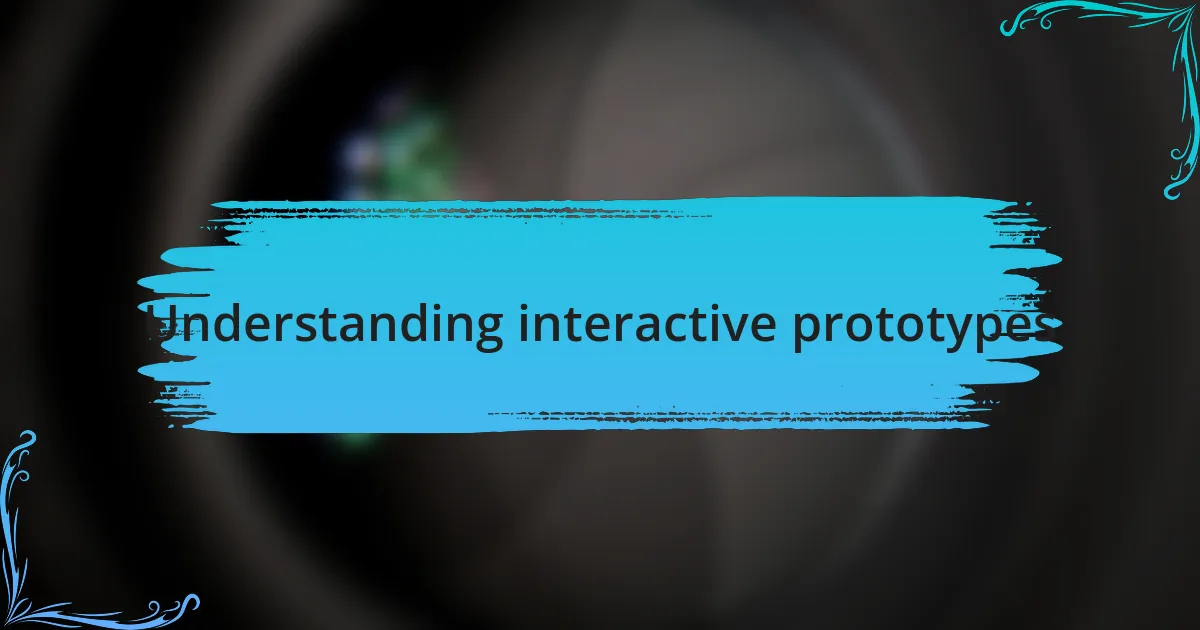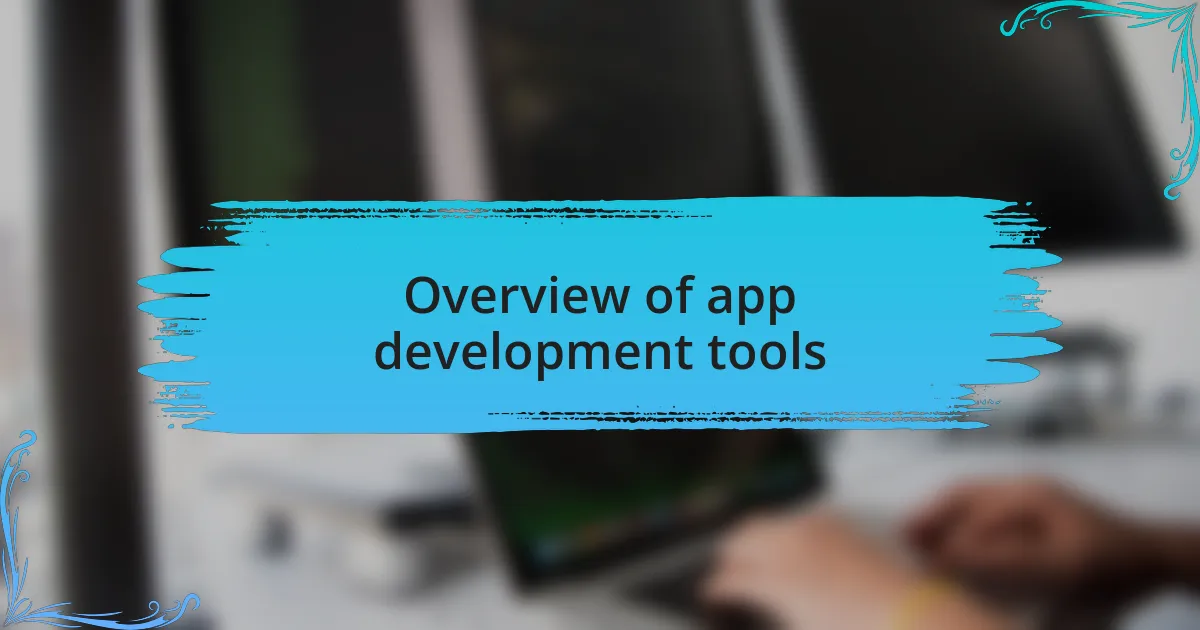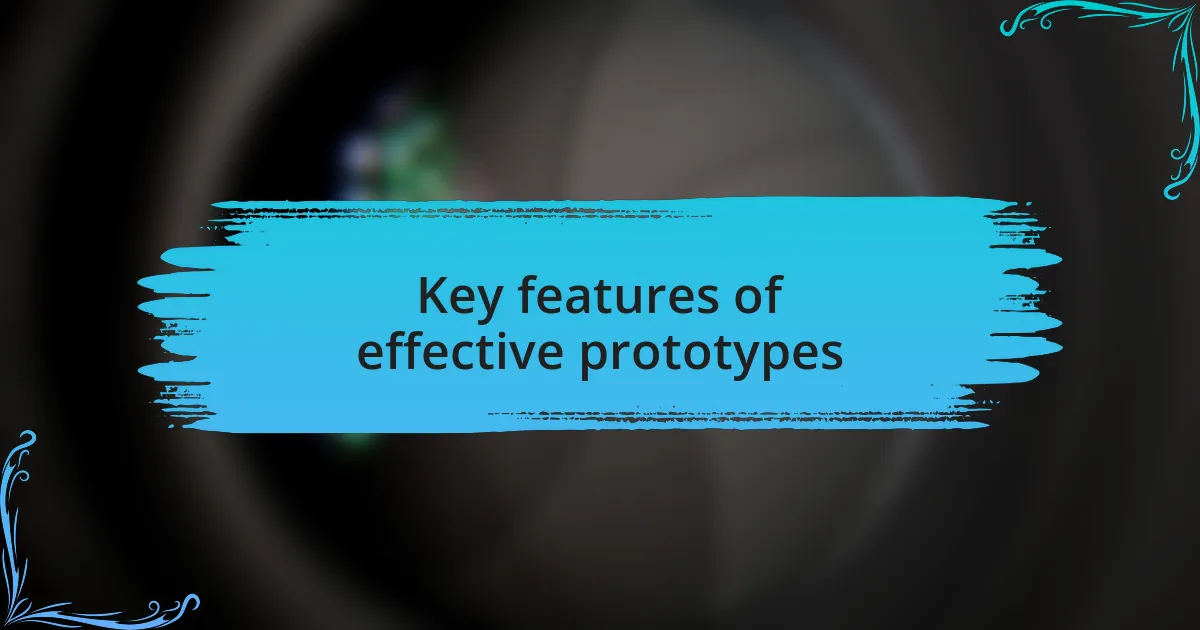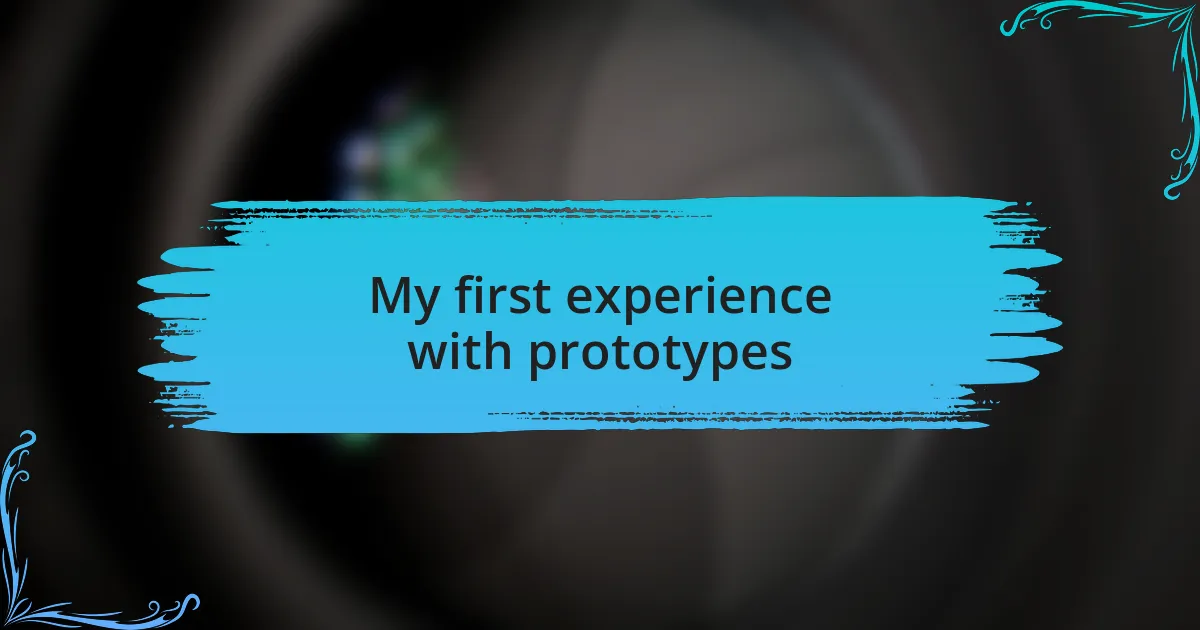Key takeaways:
- Interactive prototypes enable real user interactions, revealing insights and improving the design process through immediate feedback.
- Iteration and user feedback are crucial for refining prototypes, conveying that they are dynamic tools that evolve through interaction.
- Effective communication and collaboration among team members and stakeholders enhance the prototyping process and ultimately the product’s success.
- Balancing visual appeal with core functionality is essential, as is engaging with users to ensure designs meet their needs and expectations.

Understanding interactive prototypes
When I first encountered interactive prototypes, I was struck by how they could breathe life into the static designs I was used to creating. These prototypes are more than just clickable mockups; they simulate real user interactions, allowing developers and designers to test ideas before diving into code. Have you ever visualized your app’s flow only to see it crumble during a user test? That’s the magic of interactive prototypes—they help bridge that gap between concept and reality.
In my experience, using interactive prototypes drastically shifted the way I approached user feedback. Rather than relying solely on textual descriptions or static images, I got to witness firsthand how users navigated through the ideas I presented. Watching users engage with a prototype revealed insights that I never would have anticipated in a traditional feedback session. It made me wonder: how many times has a simple interaction illuminated a flaw in logic or a gap in user needs?
The emotional impact of using interactive prototypes cannot be understated. There’s a certain thrill that comes from seeing an initial concept transform into something tangible yet fluid—a process that fosters collaboration among team members and stakeholders alike. I’ve had moments where a prototype sparked genuine excitement in a room, energizing the whole team as we discussed potential improvements. Isn’t it fascinating how a simple click can produce such powerful conversations?

Importance of interactive prototypes
Interactive prototypes play a vital role in the app development process because they provide a space for experimentation. I remember a time when I was designing a complex navigation system; creating an interactive prototype allowed me to branch out from my initial ideas without the pressure of writing code. Wouldn’t it be great to identify design flaws before the development stage? This experimentation leads to discovering user preferences and enhancing overall usability.
Additionally, interactive prototypes serve as an excellent communication tool among team members. I once shared a prototype with our marketing team, and their feedback was invaluable. They spotted gaps in aligning the app’s features with our audience’s expectations that I’d overlooked. It made me realize how important it is to involve different perspectives early on. How can we create a product that resonates if we don’t invite diverse insights into the mix?
Moreover, the ability to gather user feedback efficiently cannot be overlooked. I’ve utilized prototypes in user testing sessions, where participants navigated through screens while I observed. The targeted feedback we received was like a roadmap to improvement. By pinpointing hesitations and confusion, we could refine our approach before launch. Isn’t it incredible to think that such a streamlined process can make or break the success of an app?

Overview of app development tools
App development tools are the backbone of creating efficient and user-friendly applications. Personally, I’ve found that a well-chosen tool can simplify complex processes and enhance overall workflow. When I first started, I was overwhelmed by the sheer number of options available, but honing in on the right ones made my projects not only more manageable but also enjoyable.
One major category of these tools is integrated development environments (IDEs), which streamline coding by combining various functionalities into one interface. I recall using an IDE during a critical project with a tight deadline; it helped me quickly spot and fix bugs, which would have been a nightmare in a less consolidated environment. Have you ever experienced the thrill of transforming a complex coding challenge into a polished app, all because your tools were working as a seamless unit?
Beyond coding, there are also design-focused tools that aid in creating user interfaces. When I first dipped my toes into UX design, I was amazed at how intuitive some design tools were. They allowed me to visually express my ideas without getting lost in technical jargon. Isn’t it satisfying to craft something visually appealing that still meets user needs? Ultimately, the array of app development tools available caters to various stages of the development process, ensuring that developers can find the perfect fit for their specific needs and projects.

Key features of effective prototypes
When it comes to effective prototypes, clarity is paramount. From my experience, a prototype should communicate the core functionality of an app without unnecessary distractions. During one of my early projects, I learned this the hard way; I overloaded my prototype with details that obscured its main purpose. The moment I stripped it down to the essentials, the feedback became more focused and actionable.
Another key feature is interactivity. I’ve found that when users can engage with a prototype, it sparks more authentic responses. In a recent usability test, I introduced click-through abilities that allowed users to navigate as if they were using the finished app. The richer the engagement, the clearer the insights—the difference was night and day compared to static images. How can we truly understand user behavior without letting them test-drive our vision?
Lastly, iteration is a vital part of prototyping. Every time I revisit a prototype, I treat it as a learning opportunity. For instance, after receiving user feedback early in my journey, I quickly implemented changes that fundamentally improved the user flow. Have you ever felt the rush of refining something based on real user feedback? This cycle of testing and refining is what translates prototypes into successful applications.

My first experience with prototypes
I still vividly remember my first experience with interactive prototypes. I was working on a small app project for a local business, and the excitement of creating something tangible was overwhelming. I had meticulously designed wireframes, but it wasn’t until I converted them into a clickable prototype that everything clicked into place. Seeing users interact with my design brought a newfound energy to the process—nothing can compare to watching someone navigate a concept that only existed in my mind.
That first prototype taught me the importance of user feedback in real time. When I first presented it, I was nervous; what if they didn’t like it? But their genuine reactions, both positive and critical, were invaluable. One user struggled with finding a particular feature, which prompted me to rethink my layout entirely. The moment they voiced their confusion was a turning point for me—how could I have overlooked such a fundamental aspect? This experience instilled in me the belief that prototypes are not just tools, but living entities that evolve through interaction.
As I moved forward in my journey, I found myself drawn back to that initial prototype as a benchmark. The emotions I felt during those early testing sessions—excitement, anxiety, and sheer curiosity—spurred me on to refine my skills. Whenever I face challenges now, I often reflect on that first attempt. It reminds me that growth is an integral part of the design process; with every iteration, I’m not just creating apps but shaping experiences. How often do we let ourselves embrace the journey rather than just focus on the finish line?

Challenges I faced during prototyping
During the prototyping phase, one of the most significant challenges I encountered was managing time effectively. In my eagerness to produce a polished prototype, I often found myself sinking countless hours into minutiae—color choices, button sizes, and alignment issues. Have you ever spent an entire evening tweaking a pixel only to realize the core functionality still wasn’t right? I learned that striking a balance between visual appeal and essential usability requires discipline and focus.
Another hurdle was user feedback interpretation. I remember presenting my prototype to a group of users, and their responses were a mixed bag—some loved it, while others were left completely baffled. The difficulty was deciphering which critiques were actionable and which were based on personal preferences. It felt overwhelming, as if I was swimming through a sea of opinions, trying to find the lifebuoy that would steer my design in the right direction. How do we distinguish constructive criticism from noise? I discovered that engaging with users to gain deeper insights often led to more clarity.
Lastly, maintaining team communication proved challenging, especially as we were all juggling multiple responsibilities. There were moments when ideas were lost in translation, and I remember feeling frustrated when a miscommunication led to implementing features that didn’t align with our initial goals. It taught me the importance of setting clear expectations and having regular check-ins. How do we ensure everyone is on the same page? In my experience, open dialogue and collaborative tools have been key in bridging those gaps, fostering a more cohesive and productive environment.

Lessons learned from my journey
Throughout my journey with interactive prototypes, one significant lesson was the value of iteration. Initially, I hesitated to share my early drafts with peers, fearing negative feedback. However, once I embraced a more open approach, I realized that the more I shared, the better my prototypes became. Have you ever avoided critique only to find out that constructive feedback could have saved you countless revisions?
Another important realization was the role of empathy in design. There was a moment when I completely missed the mark on user needs—creating a feature that I thought was innovative, but users found confusing. It made me reflect on the necessity of stepping into the user’s shoes. I began to ask myself, how can I create something that truly resonates with the end-user? Engaging with potential users at the beginning stages allowed me to refine my vision significantly, aligning it with real-world needs.
Lastly, I found that patience is crucial in the prototyping process. I recall a particularly stressful night, pushing to meet tight deadlines while wanting everything to be perfect. In hindsight, I learned that allowing time for testing and revisions is not a setback but rather an investment. Have you ever rushed a project, only to realize later that a little more time could have drastically improved the outcome? Understanding this transformed my workflow, reminding me that quality should always precede speed.